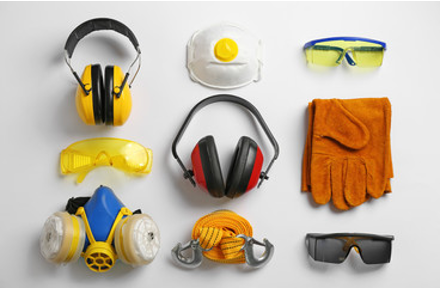
What is Personal Protective Equipment?
Personal protective equipment, commonly referred to as “PPE”, is equipment worn to minimize exposure to hazards that cause serious workplace injuries and illnesses. These injuries and illnesses may result from contact with chemical, radiological, physical, electrical, mechanical, or other workplace hazards. Personal protective equipment may include items such as gloves, safety glasses and shoes, earplugs or muffs, hard hats, respirators, or coveralls, vests and full body suits.
What can be done to ensure proper use of personal protective equipment?
All personal protective equipment should be safely designed and constructed, and should be maintained in a clean and reliable fashion. It should fit comfortably, encouraging worker use. If the personal protective equipment does not fit properly, it can make the difference between being safely covered or dangerously exposed.
When other types of controls, such as engineering controls or work practice controls, are not feasible or do not provide sufficient protection against hazard exposure, employers must provide personal protective equipment to their workers and ensure its proper use.
Departments are responsible for ensuring that their employees (and students as applicable) have the appropriate PPE in order to protect against exposure to hazards based on the work being performed. This includes conducting PPE hazard assessments to identify the hazards and select the appropriate PPE.
Departments must ensure that employees that wear PPE are trained and knowledgeable about its use. This includes:
- When it is necessary
- What kind is necessary
- How to properly put it on, adjust, wear and take it off
- The limitations of the equipment
- Proper care, maintenance, useful life, and disposal of the equipment
Faculty and staff in Research can refer to the UMBC Laboratory Safety Guide for guidance on proper PPE selection. All departments are encouraged to utilize the PPE Hazard Assessment and Selection Guide to assist with selecting the most effective PPE for the task being performed.